Design of Concrete Mix Proportion Based on Particle Packing Voidage and Test Research on Compressive Strength and Elastic Modulus of Concrete
Abstract
1. Introduction
2. Particle Packing Model in Concrete
2.1. Basic Model of Particle Packing
2.2. Interactions between Particles in the Packing System
2.3. Modification of the Basic Model of Particle Packing
2.3.1. Particle Binary Packing Test
2.3.2. Basic Model Correction
2.3.3. Solving the Actual Voidage of Particle Packing
3. Concrete Mix Design
3.1. Materials
3.2. Actual Particle Voidage
3.3. Concrete Composition Materials per m3
4. Compressive Strength Test of Concrete
5. Elastic Modulus Test of Concrete under Static Compression
6. Analysis and Discussion
7. Conclusions
- (1)
- The design method of concrete mix proportion based on interparticle voidage proposed in the research is a kind of design method for concrete mix proportion according to the principle of dense particle packing.
- (2)
- The functional relationship between the particle size ratio and the remaining volume fraction of the particles is the basis for determining the actual voidage of the granular material in the concrete.
- (3)
- The coarse aggregates in the concrete prepared by the method proposed in this research are closely distributed, and even overlap each other, forming a relatively dense concrete core skeleton. Micro-cracks and defects in the interface transition zone of the concrete are also reduced to a certain extent.
- (4)
- In the concrete, there is an increase in aggregate volume fraction and a corresponding decrease in the amount of cement, and when an appropriate amount of water reducing agent is added, the workability of the concrete mixture meets the design requirements.
- (5)
- When the water–binder ratio was 0.42, 0.47, or 0.52, the compressive strength of concrete with ages of 3, 7, 28, or 90 d all increased compared with that of the control concrete at the same age, and the degree of increase in compressive strength increased as the water–binder ratio decreased.
- (6)
- When the water–binder ratio was 0.42, 0.47, or 0.52, the static elastic modulus of concrete increased compared with that of the control concrete, and the degree of increase in static elastic modulus increased as the water–binder ratio decreased, showing that the elastic modulus is positively correlated with the compressive strength.
Author Contributions
Funding
Data Availability Statement
Conflicts of Interest
References
- Yang, Z.J. Progess of Application of Data Analysis in Concrete Mix Design. Fly Ash Compr. Util. 2015, 1, 53–56. [Google Scholar]
- Meng, L.-K. Study on Mix Proportion Design of Concrete Based on the Surplus Coefficient of Paste; Yantai University: Yantai, China, 2018. [Google Scholar]
- Zhang, X.; Zhao, M. Analysis and thinking of various concrete mix design theories. In Proceedings of the Symposium on Concrete and Cement Products, Wuhan, China, 3 July 2013. [Google Scholar]
- Ministry of Housing and Urban-Rural Construction of the People’s Republic of China. Specification for Mix Proportion Design of Ordinary Concrete; JGJ 55-2011; China Building Industry Press: Beijing, China, 2011.
- Han, X.-H. Research on Mix Proportion Design of Concrete Based on Workability; Tsinghua University: Beijing, China, 2010. [Google Scholar]
- Peng, H. Research on Concrete Mixture Design Method Based on Aggregate Gradation Optimum; Beijing University of Civil Engineering an Architecture: Beijing, China, 2014. [Google Scholar]
- Peng, Z.-Q. Research on Design of the Concrete Proportion Considering Aggregate Gradation and the Density; Kunming University of Science and Technology: Kunming, China, 2010. [Google Scholar]
- Huang, Z.-L.; Zhan, Y.-Y. Design strategy for durability of high-performance concrete with dense ratio method. In Proceedings of the Academic Conference on Research and Application of High-Performance Concrete Across the Taiwan Straits in the New Century, Shanghai, China, 1 June 2002; pp. 14–20. [Google Scholar]
- Huang, Z.-L.; Cai, Z.-D.; Sun, G.-Z.; Wang, Z.-H. Design and application case of high-performance concrete in Shenyang area using compact ratio method. In Proceedings of the International Symposium on High-Strength and High-Performance Concrete and Its Application, Qingdao, China, 27 April 2004; pp. 266–274. [Google Scholar]
- Peng, Y.-Z.; Huang, Z.-L. Concrete dense packing model and engineering properties of aggregate concretes with different densities. J. Univ. Sci. Technol. Beijing 2010, 32, 366–369. [Google Scholar]
- Wang, L.-L.; Liu, J.; Xiong, S.-B.; Wang, D.-S. The packing of mineral admixture and concrete’s dense positive-fill mix proportion design. Concrete 2004, 3, 26–28. [Google Scholar]
- Wang, L.-J.; Zheng, F.-Y.; Liu, J.; Wang, Q.-G. Infilled Coefficient Mix Design of Concrete. J. Shenyang Jianzhu Univ. 2006, 22, 191–195. [Google Scholar]
- Fu, P.-X. On the more reasonable design method of concrete mix proportion. Archit. Technol. 2008, 39, 50–55. [Google Scholar]
- Nan, S.; Buquan, M. A new method for the mix design of medium strength flowing concrete with low cement content. Cem. Concr. Compos. 2003, 25, 215–222. [Google Scholar]
- Campos, H.; Klein, N.; Filho, J.M. Proposed mix design method for sustainable high-strength concrete using particle packing optimization. J. Clean. Prod. 2020, 265, 121907. [Google Scholar] [CrossRef]
- Yousuf, S.; Sanchez, L.F.M.; Shammeh, S.A. The use of particle packing models (PPMs) to design structural low cement concrete as an alternative for construction industry. J. Build. Eng. 2019, 25, 100815. [Google Scholar] [CrossRef]
- Zuo, W.; Liu, J.; Tian, Q.; Xu, W.; She, W.; Feng, P.; Miao, C. Optimum design of low-binder Self-Compacting Concrete based on particle packing theories. Constr. Build. Mater. 2018, 163, 938–948. [Google Scholar] [CrossRef]
- Pui-Lam, N.G.; Kwok-Hung, A.; Kwan, L.; Gu, L. Packing and film thickness theories for the mix design of high-performance concrete. J. Zhejiang Univ. Sci. A 2016, 17, 759–781. [Google Scholar]
- Wang, X.; Wang, K.; Taylor, P.; Morcous, G.; Wang, X.; Wang, K.; Taylor, P.; Morcous, G. Assessing particle packing based self-consolidating concrete mix design method. Constr. Build. Mater. 2014, 70, 439–452. [Google Scholar] [CrossRef]
- Kwan, A.K.H.; Chan, K.W.; Wong, V. A 3-parameter particle packing model incorporating the wedging effect. Powder Technol. 2013, 237, 172–179. [Google Scholar] [CrossRef]
- Akcay, B.; Agar-Ozbek, A.S.; Bayramov, F.; Atahan, H.N.; Sengul, C.; Tasdemir, M.A. Interpretation of aggregate volume fraction effects on fracture behavior of concrete. Constr. Build. Mater. 2012, 28, 437–443. [Google Scholar] [CrossRef]
- Meddah, M.S.; Zitouni, S.; Belâabes, S. Effect of content and particle size distribution of coarse aggregate on the compressive strength of concrete. Constr. Build. Mater. 2010, 24, 505–512. [Google Scholar] [CrossRef]
- Grassl, P.; Wong, H.S.; Buenfeld, N.R. Influence of aggregate size and volume fraction on shrinkage induced micro-cracking of concrete and mortar. Cem. Concr. Res. 2010, 40, 85–93. [Google Scholar] [CrossRef]
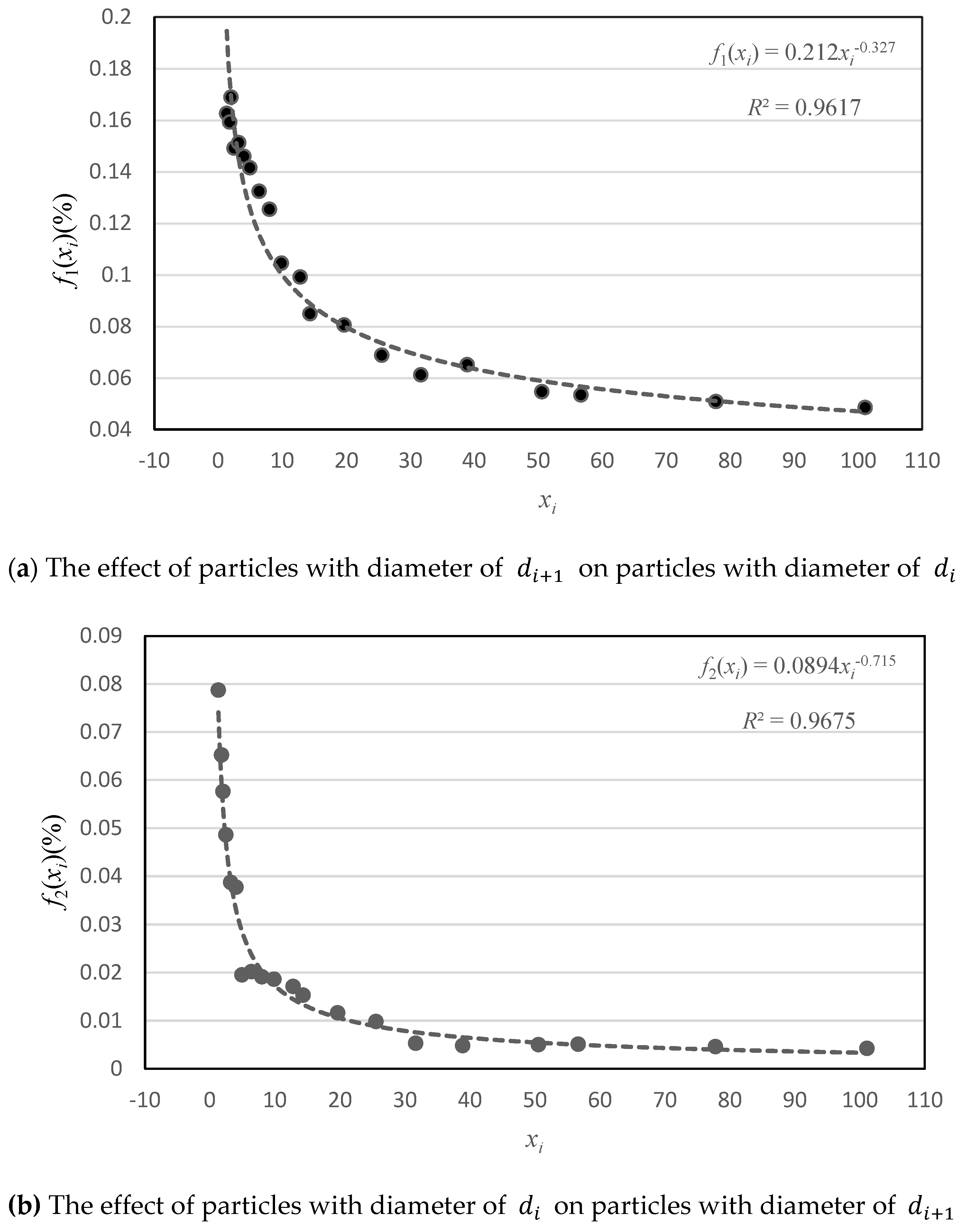
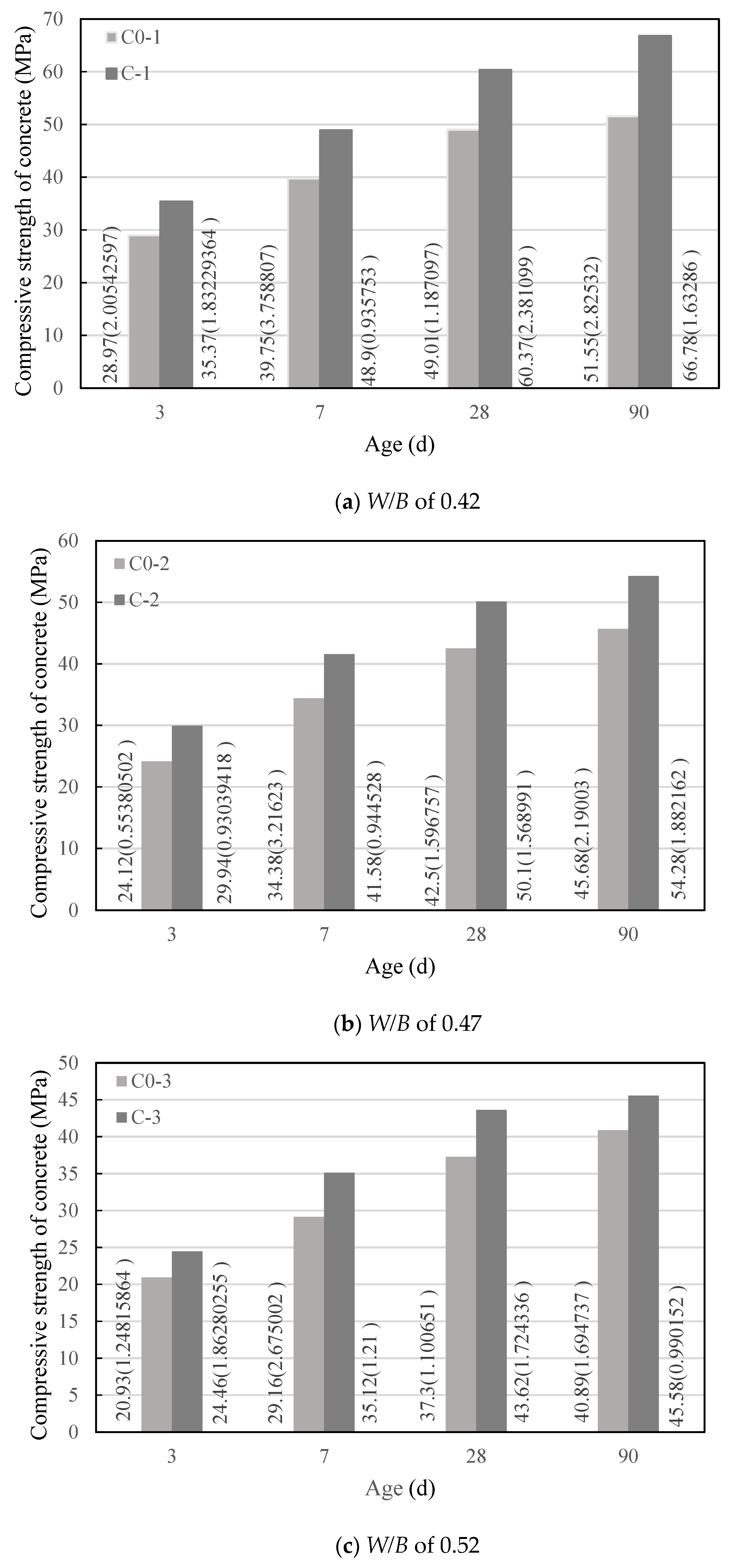
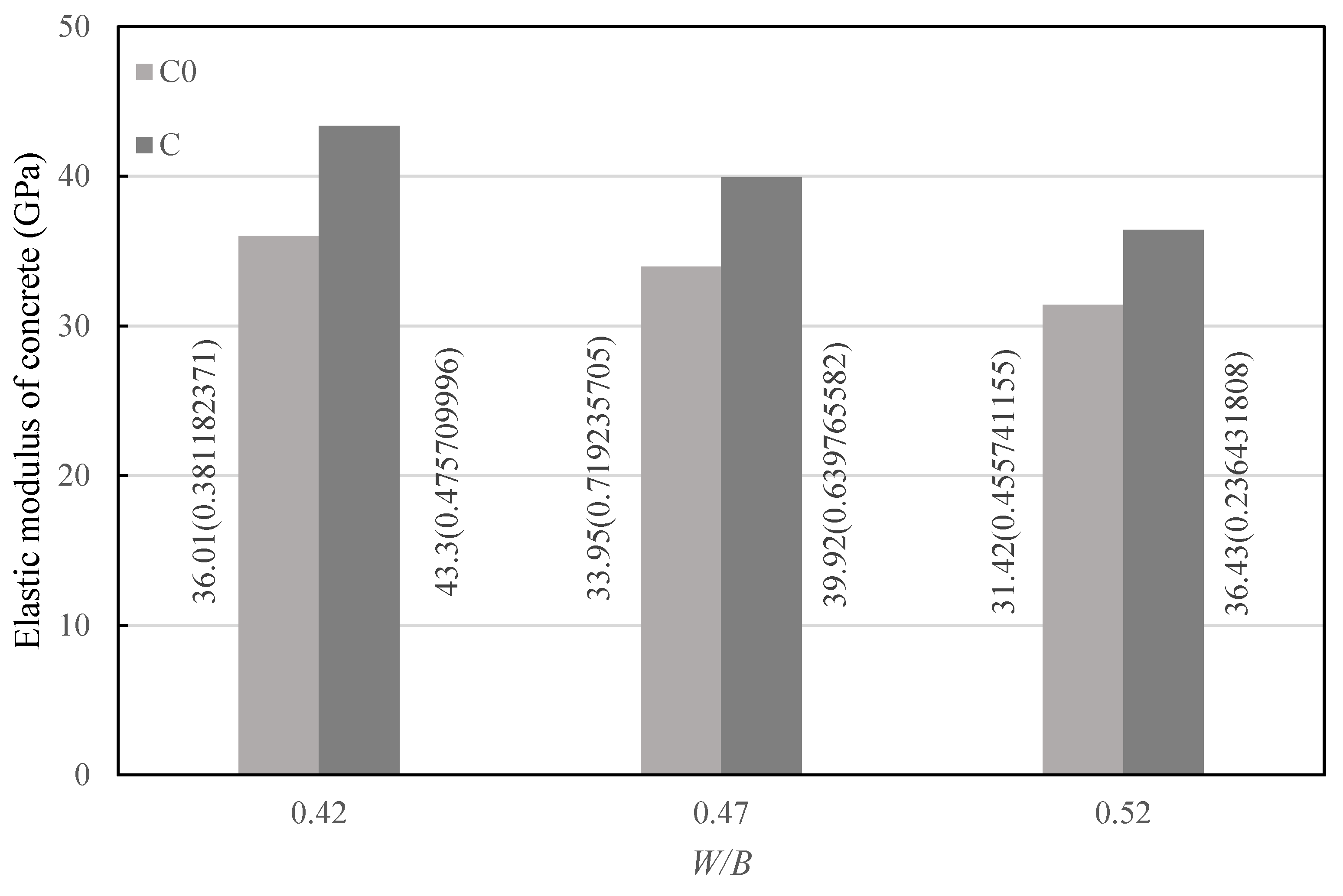

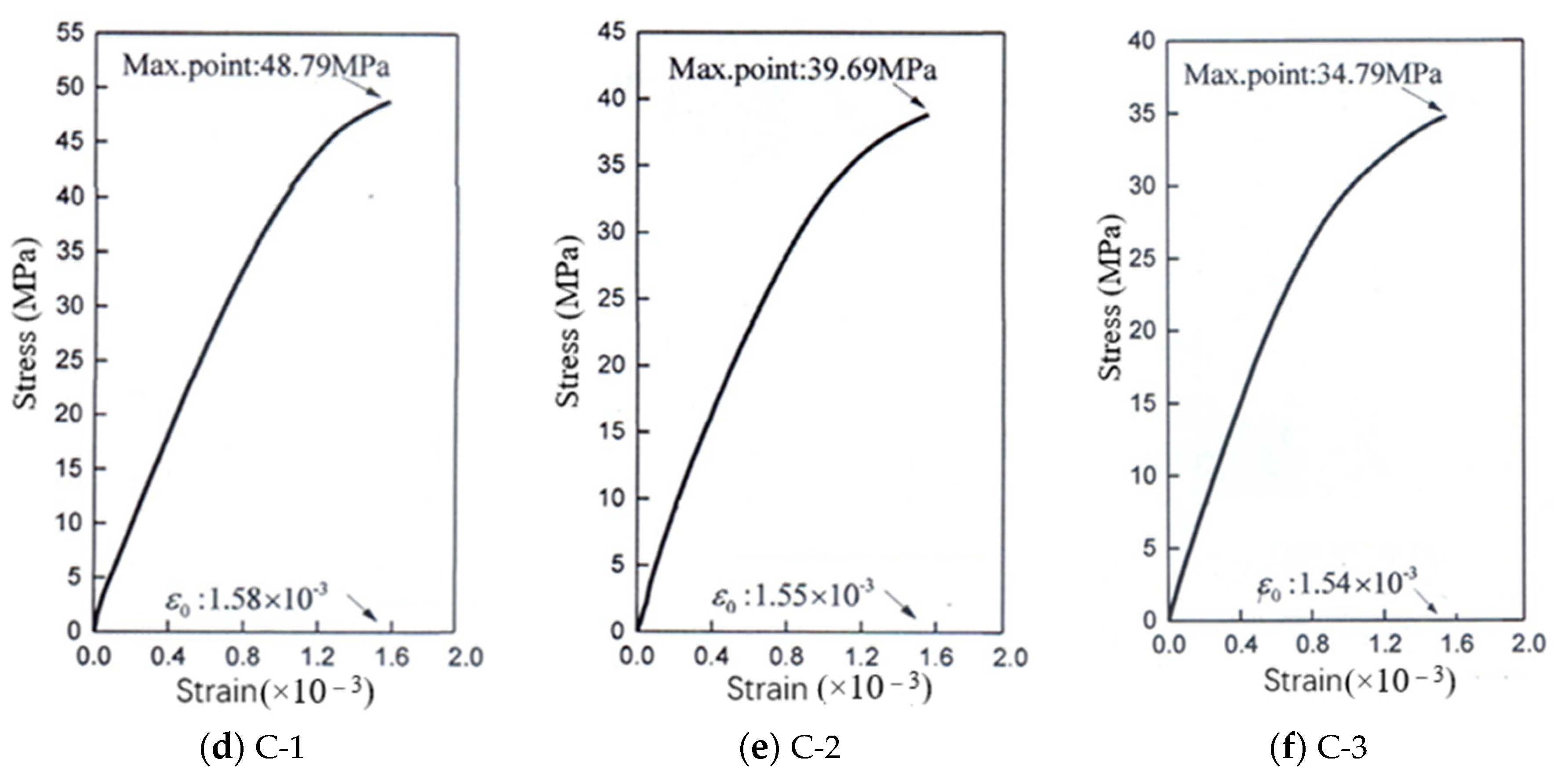
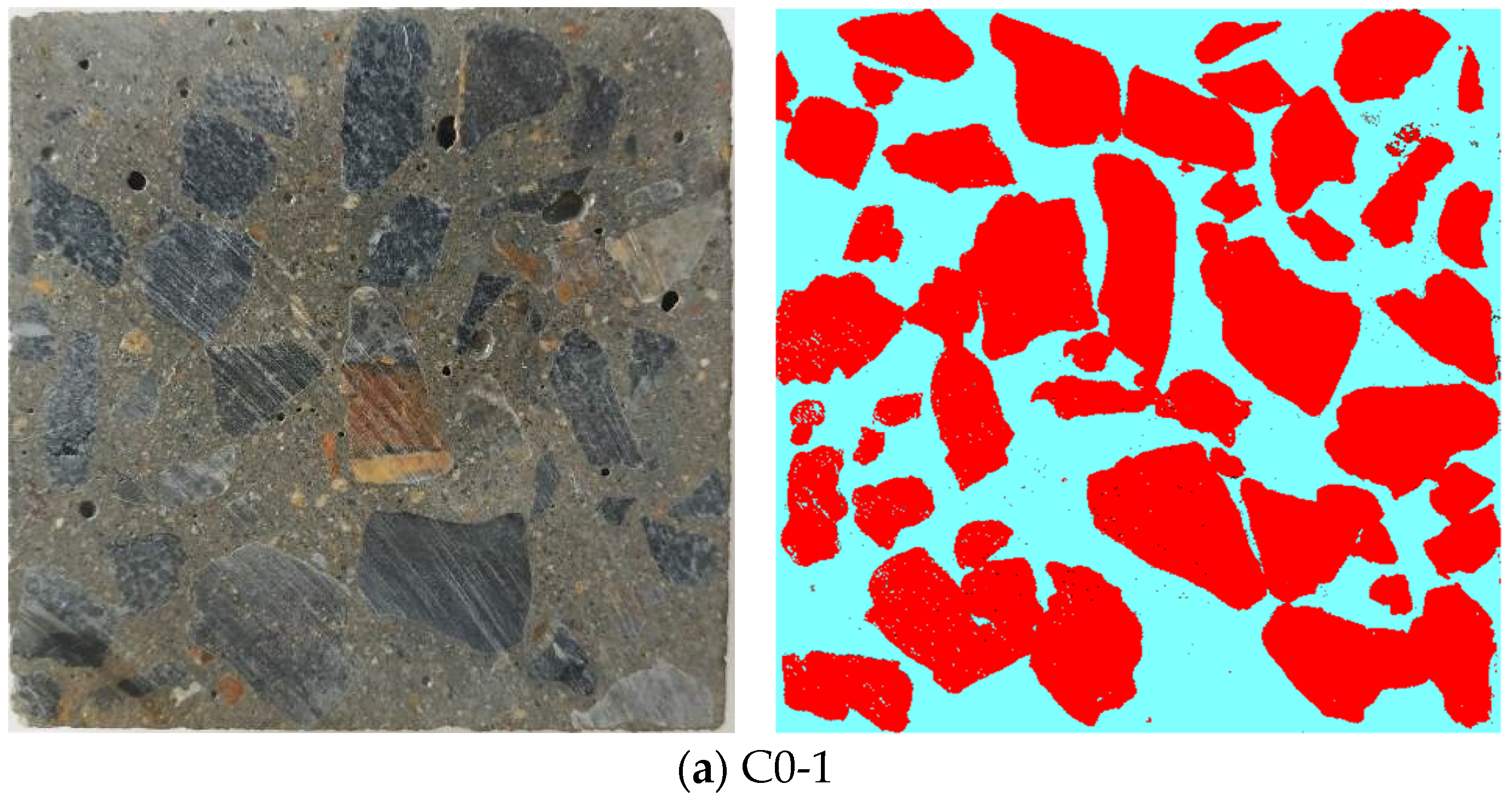

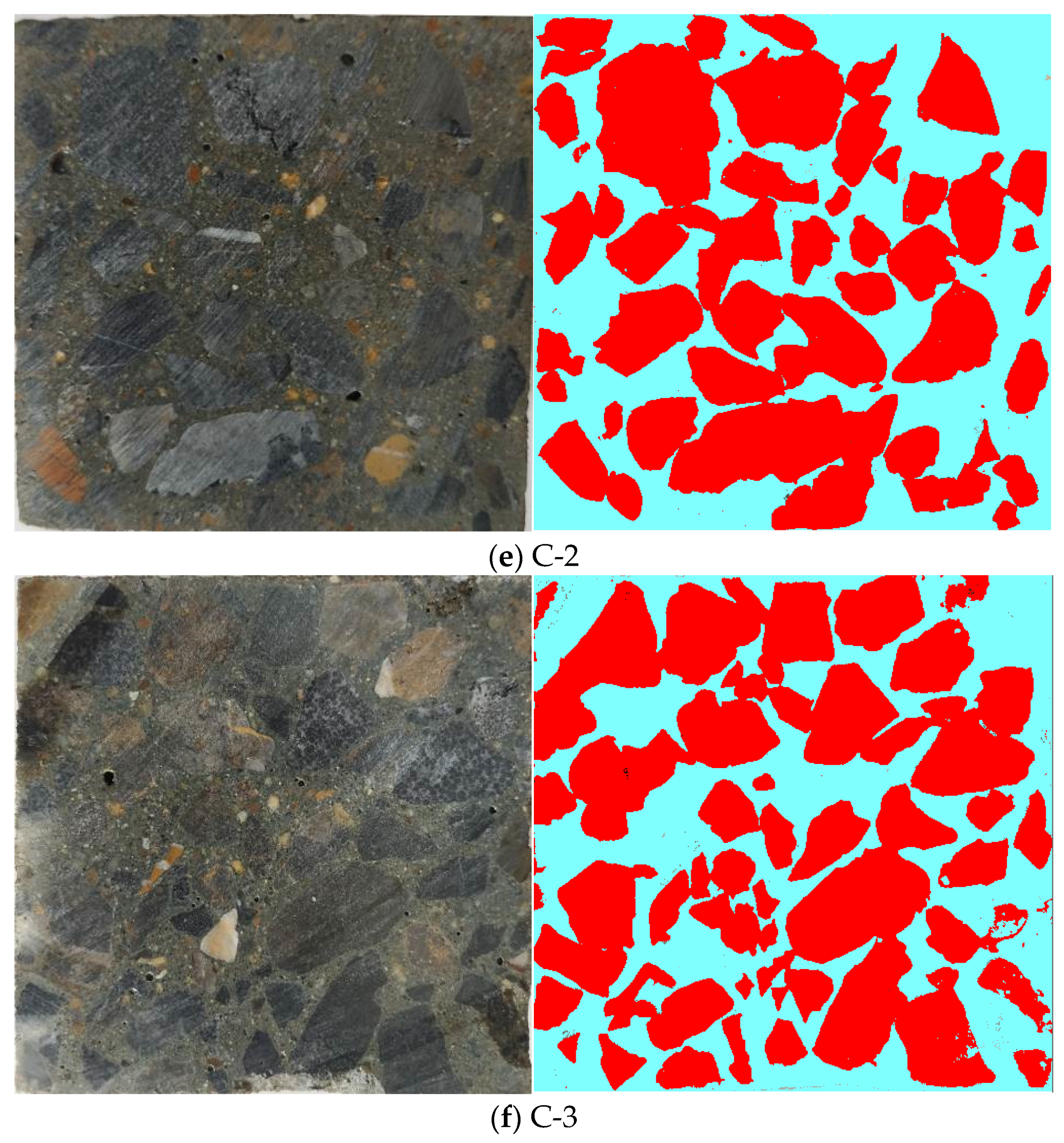

| No. | ||||||
|---|---|---|---|---|---|---|
| 1 | 1.3 | 22.75 + 17.5 | 4.434 | 2.146 | 0.1626 | 0.0787 |
| 2 | 1.784 | 22.75 + 12.75 | 4.341 | 1.778 | 0.1592 | 0.0652 |
| 3 | 2 | 0.45 + 0.225 | 4.403 | 1.502 | 0.1689 | 0.0576 |
| 4 | 2.456 | 17.5 + 7.125 | 4.066 | 1.325 | 0.1491 | 0.0486 |
| 5 | 3.193 | 22.75 + 7.125 | 4.123 | 1.055 | 0.1512 | 0.0387 |
| 6 | 4.01 | 7.125 + 1.777 | 3.979 | 0.983 | 0.1459 | 0.0377 |
| 7 | 4.923 | 17.5 + 3.555 | 3.859 | 0.508 | 0.1415 | 0.0195 |
| 8 | 6.4 | 22.75 + 3.555 | 3.611 | 0.527 | 0.1324 | 0.0202 |
| 9 | 8.006 | 7.125 + 0.89 | 3.420 | 0.498 | 0.1254 | 0.0191 |
| 10 | 9.848 | 17.5 + 1.777 | 2.850 | 0.485 | 0.1045 | 0.0186 |
| 11 | 12.8 | 22.75 + 1.777 | 2.702 | 0.446 | 0.0991 | 0.0171 |
| 12 | 14.326 | 12.75 + 0.89 | 2.315 | 0.399 | 0.0849 | 0.0153 |
| 13 | 19.663 | 17.5 + 0.89 | 2.195 | 0.302 | 0.0805 | 0.0116 |
| 14 | 25.56 | 22.75 + 0.89 | 1.876 | 0.255 | 0.0688 | 0.0098 |
| 15 | 31.667 | 7.125 + 0.225 | 1.669 | 0.138 | 0.0612 | 0.0053 |
| 16 | 38.889 | 17.5 + 0.45 | 1.775 | 0.125 | 0.0651 | 0.0048 |
| 17 | 50.556 | 22.75 + 0.45 | 1.489 | 0.130 | 0.0546 | 0.0050 |
| 18 | 56.667 | 12.75 + 0.225 | 1.456 | 0.133 | 0.0534 | 0.0051 |
| 19 | 77.778 | 17.5 + 0.225 | 1.385 | 0.120 | 0.0508 | 0.0046 |
| 20 | 101.111 | 22.75 + 0.225 | 1.323 | 0.109 | 0.0485 | 0.0042 |
| Main Mineral Composition(%) | Main Chemical Composition(%) | |||||||||
|---|---|---|---|---|---|---|---|---|---|---|
| C2S | C3S | C3A | C4AF | SiO2 | Al2O3 | Fe2O3 | CaO | MgO | SO3 | LOI |
| 21.8 | 51 | 11 | 13 | 20.18 | 4.98 | 3.28 | 60.92 | 4.59 | 1.78 | 3.48 |
| Strength Grade | Setting Time (min) | Apparent Density (g/cm3) | Compressive Strength (MPa) | Soundness | Volume Average Particle Size (μm) | Voidage (%) | ||
|---|---|---|---|---|---|---|---|---|
| Initial | Final | 3d | 28d | |||||
| 42.5 | 176 | 403 | 3.158 | 22.6 | 49.8 | Qualified | 20.8 | 52.5% |
| Apparent Density (kg/m3) | Bulk Density (kg/m3) | Voidage(%) | Volume Average Particle Size (mm) | Fineness Modulus |
|---|---|---|---|---|
| 2607 | 1473 | 43.5 | 0.99137 | 2.51 |
| Apparent Density (kg/m3) | Bulk Density (kg/m3) | Voidage (%) | Volume Average Particle Size (mm) | Crushing Index (%) |
|---|---|---|---|---|
| 2727 | 1466 | 46.2 | 15.862 | 9 |
| Volume Average Particle Size (mm) | Actual Voidage (%) | |||||
|---|---|---|---|---|---|---|
| Coarse aggregate | 15.862 | 16 | 0.0856 | 0.0123 | 46.2 | 50.8 |
| Fine aggregate | 0.99137 | 47.662 | 0.06 | 0.00565 | 43.5 | 49.0 |
| Cement | 0.0208 | 1.359 | 0.192 | 0.0817 | 52.5 | 55.6 |
| No. | W/B | Cement (kgm3) | Sand (kgm3) | Crushed Stone (kgm3) | Water (kgm3) | Water Reducer Mass Fraction (Percentage of Cement Mass) (%) |
|---|---|---|---|---|---|---|
| C0-1 | 0.42 | 511.9 | 511.0 | 1137.4 | 215.0 | 0 |
| C0-2 | 0.47 | 457.5 | 558.7 | 1134.1 | 215.0 | 0 |
| C0-3 | 0.52 | 413.5 | 605.1 | 1123.7 | 215.0 | 0 |
| C-1 | 0.42 | 369.2 | 626.1 | 1330.0 | 155.1 | 0.6 |
| C-2 | 0.47 | 362.7 | 615.1 | 1306.7 | 170.5 | 0.4 |
| C-3 | 0.52 | 356.1 | 603.9 | 1282.9 | 185.2 | 0.2 |
| No. | Age (d) | |||
|---|---|---|---|---|
| 3 | 7 | 28 | 90 | |
| C-1 | 22.09 | 23.02 | 23.18 | 29.54 |
| C-2 | 24.13 | 20.94 | 17.88 | 18.80 |
| C-3 | 16.87 | 20.44 | 16.94 | 11.47 |
| C0-1 | C0-2 | C0-3 | C-1 | C-2 | C-3 | |
|---|---|---|---|---|---|---|
| Aggregate volume fraction (%) | 61.31 | 63.02 | 64.42 | 72.79 | 71.52 | 70.20 |
| Increase rate of aggregate volume fraction (%) | — | — | — | 18.72 | 13.49 | 8.97 |
Publisher’s Note: MDPI stays neutral with regard to jurisdictional claims in published maps and institutional affiliations. |
© 2021 by the authors. Licensee MDPI, Basel, Switzerland. This article is an open access article distributed under the terms and conditions of the Creative Commons Attribution (CC BY) license (http://creativecommons.org/licenses/by/4.0/).
Share and Cite
Cheng, Y.-H.; Zhu, B.-L.; Yang, S.-H.; Tong, B.-Q. Design of Concrete Mix Proportion Based on Particle Packing Voidage and Test Research on Compressive Strength and Elastic Modulus of Concrete. Materials 2021, 14, 623. https://doi.org/10.3390/ma14030623
Cheng Y-H, Zhu B-L, Yang S-H, Tong B-Q. Design of Concrete Mix Proportion Based on Particle Packing Voidage and Test Research on Compressive Strength and Elastic Modulus of Concrete. Materials. 2021; 14(3):623. https://doi.org/10.3390/ma14030623
Chicago/Turabian StyleCheng, Yun-Hong, Bao-Long Zhu, Si-Hui Yang, and Bai-Qiang Tong. 2021. "Design of Concrete Mix Proportion Based on Particle Packing Voidage and Test Research on Compressive Strength and Elastic Modulus of Concrete" Materials 14, no. 3: 623. https://doi.org/10.3390/ma14030623
APA StyleCheng, Y.-H., Zhu, B.-L., Yang, S.-H., & Tong, B.-Q. (2021). Design of Concrete Mix Proportion Based on Particle Packing Voidage and Test Research on Compressive Strength and Elastic Modulus of Concrete. Materials, 14(3), 623. https://doi.org/10.3390/ma14030623




